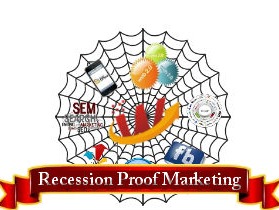
Why Meta is Phasing Out Automated Ads
In a move that might impact the way businesses approach advertising on social media, Meta recently announced the phase-out of Automated Ads, a feature that has been likened to an intermediate option for those looking to advertise on Facebook and Instagram. Automated Ads allowed brands to create campaigns simply by answering a series of questions about objectives, which Meta then leveraged to optimize targeting using AI. However, as technology evolves, so does Meta’s approach toward advertising.
The Evolution to Advantage+
Automated Ads served as a precursor to Meta’s new Advantage+ ad suite, which has begun to take center stage in the advertising landscape. With Advantage+, Meta aims to streamline the ad creation process even further. For instance, reports from Meta CEO Mark Zuckerberg suggest ambitions for a simpler, more intuitive advertising platform where businesses can initiate campaigns with minimal interaction.
Zuckerberg remarked, "We’re going to get to a point where you’re a business, you come to us, you tell us what your objective is, you connect to your bank account, you don’t need any creative, you don’t need any targeting demographic..." This reflects Meta’s vision of a one-click ad solution, relegating the somewhat outdated Automated Ads to the past.
Advantages of Transitioning to Advantage+
The transition from Automated Ads to Advantage+ presents several advantages for marketers:
- Advanced Targeting and Optimization: Advantage+ utilizes advanced algorithms to analyze real-time behavior, connections, and campaign performance, allowing businesses to effectively reach high-value users without manually setting audience parameters.
- Dynamic Budget Allocation: The Advantage+ system is designed to automatically allocate budgets to high-performing ad sets based on real-time feedback, ensuring that your marketing budget is used effectively.
- Improved Creative Selection: By optimizing ad creatives dynamically, brands can focus on producing engaging content without needing extensive prior knowledge of what will perform best.
Potential Downsides of Automation
While the advantages are promising, it’s essential to acknowledge some potential issues with the transition:
- Loss of Control: As companies transition to a highly automated system, some may feel they are relinquishing control over creative decisions and very specific targeting elements, which could frustrate brands that require precise targeting.
- Transparency Issues: Advertisers have expressed concern about the transparency of automated systems. Understanding why specific decisions were made by the AI in targeting or budget allocation can be difficult.
Getting Ready for Advantage+
For businesses familiar with Automated Ads, transitioning to Advantage+ will likely be a learning curve. However, Meta is facilitating this shift by offering resources and guidance for users. It is imperative for brands to start understanding the full capabilities of the Advantage+ system. The goal is not just to shift methods but to embrace a new, streamlined way to enhance ad performance, optimize campaigns, and ultimately increase return on investment.
The Future of Advertising on Meta’s Platforms
The evolution to Advantage+ hints at a larger trend in the advertising industry—a move towards greater automation. As businesses lean towards more efficient advertising methods, the reliance on AI to manage campaigns will likely grow. Thus, understanding how to effectively harness the power of Advantage+ will be crucial for those looking to maintain a competitive edge.
Conclusion
As Meta phases out Automated Ads, advertisers should prepare for a new era of ad management with Advantage+. It’s not just about keeping up with technology; it’s about leveraging these tools to maximize marketing effectiveness. Businesses willing to embrace these changes and adapt to the new systems will find themselves better equipped to navigate the social media landscape successfully.
Stay ahead of the game by exploring Advantage+ today. Understanding its features and capabilities can help you make informed decisions as you pivot from more traditional advertising methods.
 Add Row
Add Row  Add
Add 




Write A Comment